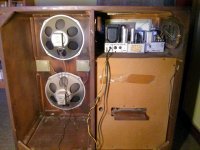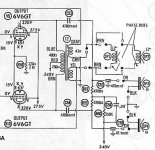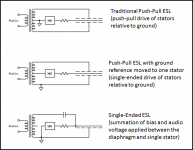Does anyone know what these odd flat tweeters are? They are from an old General Electric speaker with a 20x9 inch woofers. An online friend bought a pair, I've never seen them before. I call them "Cheese Graters" 
At first glance they look electrostatic, but there is no high voltage supply.
Anyone know?
At first glance they look electrostatic, but there is no high voltage supply.
Anyone know?
Attachments
look at the "Blue Line" on this link
http://www.sonitron.be/useruploads/files/SonitronPiezoelectricSpeakerTechnology.pdf
http://www.sonitron.be/useruploads/files/SonitronPiezoelectricSpeakerTechnology.pdf
Single ended eslfunny

Martin logan in the 1990s thay set up most of there ESL panels Single Ended....thay said it was for the off shore sales.... were the front of there panels had to be gounded....not in the nom push pull tranfourmer setup..
this setup drove me nuts at frist....till like with most things ESL....Bolserst helpet me-us get our head a round the setup....
thanks you Bolserst for years of help on all thing esl...
here the one CLS setup...an yes any esl panels can be setup Single endedly...an work an sound great!
Attachments
Last edited:
Philco and Zenith are probably better know for their use of ESL tweeters in their late 50s early 60s radios and hi-fi consoles than GE. Attached pic and circuit for a typical Zenith. With bias voltages not much higher than the audio signal, most of the single-ended ESL tweeters I have measured of this vintage have significant THD(>5%), but since they cross over so high, they still tend to sound much better than their dynamic driver counter parts of that vintage.Turns out the are electrostatic. And driven as Kevin says. G.E. used them in stereos and TVs in 1959 and a little later. Amazing.
Front view of Zenith ESL tweeters posted here: http://www.diyaudio.com/forums/plan...o-stereo-phone-electrostatic.html#post4109102
Example Philco ESL tweeter pic posted here: http://www.diyaudio.com/forums/plan...o-stereo-phone-electrostatic.html#post4109100
Attachments
If you have a push-pull ESL, (ie two stators with diaphragm in between) there really isn't any difference if you move the ground reference from center tap of the step-up transformer to one of the stators. Some people call this single-ended drive of a push-pull ESL. The diaphragm only responds to the static electric field generated in the air gap between the stators, so moving the ground reference point won't make a difference to the ESL although it might change the HF response slightly due to changes in the transformer parasitics.Would push pull be better??...Bolserst.... I think said there were no real diff?...
But, if you have a single-ended ESL, (ie one stator and diaphragm) distortion is much higher. If I recall correctly, the Janzen/Hunt analysis and experiments showed that the bias voltage needed to by 5x higher than the audio signal voltage to keep THD < 5%.
Attachments
- Status
- This old topic is closed. If you want to reopen this topic, contact a moderator using the "Report Post" button.
- Home
- Loudspeakers
- Planars & Exotics
- G.E. Flat tweeters. What are they?
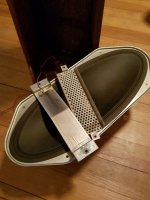
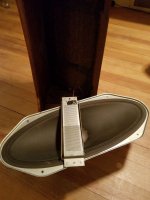
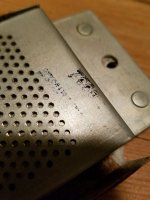
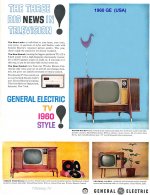
![scan0003%20(Medium)[1].jpg](/community/data/attachments/542/542172-5c55d39a9a7d0d97fed7dbff5e85626a.jpg)
